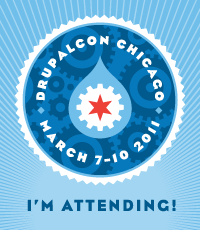As we looked at how we would upgrade all of our Drupal 6 sites to Drupal 7 we realized we had a big problem. Big as in over a thousand individual Drupal sites. We have become the victim of our own success in that we made it too easy to create new Drupal sites whenever we received a request, without first asking if a new site was really necessary. Drupal itself scales very well. It can handle much bigger sites than we currently have. By creating so many smaller sites we were actually making it harder for people to get around on our pages because larger sites became fragmented with no global navigation between the various units. It also made it harder for people to share data across sites, which caused unnecessary duplication of data input. Finally it created a lot of administrative overhead for CWS to keep this many sites upgraded.
We made it a strategic direction for Drupal 7 to begin consolidating as many small sites into their parent units as possible. We knew the first issue we would have to face is how to divide up the authoring responsibilities while maintaining ownership for different parts of a site. It turns out one of the reasons we currently have so many sites is because different people are responsible for content creation and wanted to make sure other people would not be able to modify their work. While this problem could easily be solved by just getting some agreements between the various authors on a larger site, we wanted to be able to assure people that we could prevent this possibility through Drupal permissions. We also knew that people wanted the ability for their sites to have some distinctiveness. While all of our Drupal sites adhere to the branding guidelines set forth by Web Communications, there is still room for sites to provide certain characteristics unique to their department or unit. We set out to find a solution for this.
What we came up with is a Drupal module called “Organic Groups”. The organic part does not mean that the groups were grown with abundant amounts of compost, but rather that they are flexible enough so that groups can be configured in a variety of different ways. For example we knew that colleges would need to build groups for their schools, departments, and programs whereas administrative sites would have a variety of working units that will need groups. After some testing we were confident that the Organic Groups module was going to suit our needs and so we started the work of communicating with people about our plan, and get some sites on board.
Central Web Services is a devision of Media Services which is in turn part of Information Services. There are a number of other units under IS including Enterprise Computing Services, Network Servies, and Technology Support services. When we began the task of updating the IS site using Drupal 7 it was agreed that we would consolidate a number of separate websites into the IS site using Organic Groups. The IS site is organized around the services that we provide. Each service is a group. Each group is also part of a service category. We are still in the process of converting all of this to Organic Groups but it looks like its going to work very well.
On the academic side of things we also have been working with the College of Liberal Arts to upgrade and consolidate their sites. We currently have the parent college site in Drupal 7 and are working with them to migrate the departments one a time from the old Drupal 6 sites. For a college the groups map nicely to departments which group into schools. Each department can have it’s own set of rotating features, highlights, directory listing etc. The department and school name also show up as the site name along with the college. Departments can have their own content editors, or and editor can work for several departments. There can also be college wide editors who can help with all of the departments if that is the way they want it.

Department name becomes the main site name, while the College and School names are combined above, with each linking to its respective front page.
Once we have completed CLA and IS we will begin working with other departments to consolidate and upgrade sites to Drupal 7 at an accelerated pace. The end result will be better websites for everybody.




You must be logged in to post a comment.